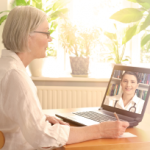“In our area of New Hampshire, we have patients who are very distant in time,” says Dr. Albert. “I see patients who travel six hours or more round trip and have trouble maintaining an ongoing relationship if we don’t have a telemedicine site nearby. I recently saw one person who hasn’t been seen since 2012.”
As older physicians retire in higher numbers, remote practice may be one way to address physician shortage concerns in rheumatology. Because of this, suburban and even smaller urban areas may become viable markets for rheumatologists to practice telemedicine.
Best Telemedicine Patient Controversial
The best patient for telemedicine is one of some controversy. Some suggest in-person appointments for at least the initial assessment.
“What works best for me is to have the first visit face to face,” says Rohit Aggarwal, MD, assistant professor in the Division of Rheumatology at the University of Pittsburgh (Pa.) Medical Center. “After you have decided on a treatment regimen, then you can see them remotely for follow-ups.” However, that is more applicable to more severe or multisystem diseases, such as systemic sclerosis and polymyositis, in which there might be significant importance for touch by an experienced rheumatologist to make the correct diagnosis.
The other model is to see the patient remotely from the first encounter. This has some limitations and can make the differential diagnosis harder. However, with the help of good imaging and a competent presenter, even these patients can be appropriately served.
“You have to base these decisions on the population you are serving and the areas you are trying to help,” says Huzaefah Syed, MD, assistant professor at the Virginia Commonwealth University (VCU) School of Medicine in Richmond. “If you have a lot of stable patients and you don’t need to see them as much as talk to them, then telemedicine is worth doing. We still can learn a lot from watching them move around, or what the patient tells us.”
Setting Up the Host
Once the decision to look into telemedicine has been made, the next thing on the checklist is to make arrangements with a local hospital or physician. Someone will need to host the local telemedicine presence. In most instances, it’s probably easier to work with someone in the community than try to do it on your own.
“There is always an agreement between facilities when you do telemedicine,” says Tamara Broadnax, MS, RN, director of telemedicine at VCU. “The contracts need to clearly define who will be seeing the patients, the doctor’s availabilities, what needs to be done to license, credential and privilege your physician at that facility, who employs the remote staff and other concerns, such as payments.”



